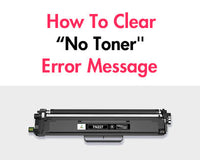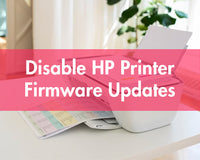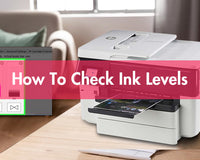Have you ever been frustrated when your printer outputs documents that are smaller than expected? Whether you're printing presentations, photos, or design documents, incorrect print sizes can lead to confusion and wasted paper. In this article, we’ll explore potential reasons why your printer may print documents smaller than their actual size and provide actionable solutions to fix them.
1. Incorrect Page Settings or Paper Size
One of the most common reasons for a smaller printout is a mismatch between the paper size in your print settings and the actual size of the paper loaded in the printer. If your document is set to print on a specific paper size (e.g., A4), but your printer is set to a different paper size (e.g., Letter), the printer will try to adjust the document to fit, which may result in a smaller printout.
Solution:
Open your document and go to the print settings (accessible through the "File" menu or the print icon in most applications).
Check that the paper size in your print settings matches the paper size loaded in the printer tray. Common printer paper sizes include A4, Letter, Legal, etc.
If they don’t match, either change the paper size in the print settings or load the correct paper size into the printer.
2. Incorrect Paper Feed or Paper Type
Another factor that can cause this problem is incorrect paper feed or paper type settings. If the paper in your printer is not aligned properly or is mismatched with the printer settings, it can cause the printer to properly the document down to fit the paper. In addition, if the paper you are using is not compatible with your printer (e.g., photo paper or thicker cardstock), the printer can also shrink the document.
Solution:
Check that the paper you are using matches the type and size specified in your printer’s settings. For example, if you are using specialty paper (like photo paper or card stock), make sure the settings reflect this paper type.
Make sure the paper is loaded and aligned correctly in the tray.
If the issue persists, try using a standard sheet of paper to see if it’s a paper-specific problem.
3. Scaling or "Fit to Page" Setting
Many printers have an option to automatically scale a document to fit the page. This can cause the document to print smaller than its actual size. If you enable "Fit to Page" or "Shrink to Fit," the printer will automatically reduce the size of the content to ensure it fits onto the page.
Solution:
Go to the print dialog box and look for options like "Scale," "Fit to Page," or "Shrink to Fit."
If one of these options is selected, uncheck it to prevent the document from being resized.
Select "Actual Size" or "100%" in the scale options to maintain the document's original dimensions.

4. Margin Settings in Your Application
Some applications, such as Microsoft Word or Adobe PDF Reader, have default margin settings that can shrink the contents of a document to fit within the printable area. This can cause text or images to appear smaller than expected.
Solution:
Open the document, go to the "Page Layout" or "Margins" section of your application.
Check and adjust the margin settings. If the margins are set too large, reduce them to a smaller value or set them to "None" or "Default."
If necessary, check the "Page Setup" section of the application to ensure the correct paper size and layout are selected.
5. Printer Driver Settings
Printer driver software is responsible for managing the communication between the computer and the printer. Incorrect driver settings or outdated printer drivers can cause the printer to output in an unexpected size.
Solution:
Visit the printer manufacturer's website and search for the latest printer driver for your model.
Follow the instructions on the display to download and install the latest printer driver.
After installation, restart your computer and printer to ensure the new driver is applied correctly.
Try printing again to see if the problem of incorrect print size is resolved.
6. Outdated Printer Firmware
The printer's firmware (the software that helps the printer communicate with your computer) may have errors that affect print quality, including incorrect print sizes. Sometimes, these problems can be resolved with a firmware update. The firmware update process is often simple and can resolve many printing issues, including size discrepancies.
Solution:
Go to your printer manufacturer’s website and check if there are any firmware updates available for your model.
Download and install the firmware update to your computer according to the instructions on the printer manufacturer's website.
After updating, test your printer to ensure the printouts are the correct size.
Printer Manufacturer Website:
Below are the official support websites for some popular printer manufacturers, where you can find drivers, firmware updates, manuals, and other support resources.
- HP: [https://support.hp.com/us-en]
- Brother: [https://www.brother-usa.com/support]
- Canon: [https://www.usa.canon.com/support]
- Epson: [https://www.epson.com/Support]
- Lexmark: [https://support.lexmark.com]
- Xerox: [https://www.xerox.com/support]
- Kyocera: [https://www.kyoceradocumentsolutions.us/support]
- Ricoh: [https://www.ricoh-usa.com/support]
- Dell: [https://www.dell.com/support]
- OKI: [https://www.oki.com/us/support]
FAQs About Printer Printing Smaller Than Actual Size
Q1: How do I stop the printer from shrinking the file?
Uncheck the "Fit to Page" or "Shrink to Fit" options in the printer settings. Select "Actual Size" or "100%" to prevent any resizing.
Q2: Why is my printout still smaller than expected after I selected "Actual Size" ?
If you select "Actual Size" and the print size is still smaller, it may be due to a mismatch between the paper size in your document and the paper loaded in your printer. Make sure the paper size of the file is the same as the paper size in the printer settings. Also, check if the print settings in your application are overriding the printer settings.
Q3: How do I check if my printer's paper feed is causing the issue?
To check the paper feed, make sure the paper is aligned and loaded correctly in the tray. If the paper is misaligned or the wrong type is used, the printer may scale down the content to ensure it fits on the page. Additionally, check if your printer supports the paper type (e.g., photo paper or cardstock) you are using.
Q4: What should I do if only certain parts of my document print small?
Check the document itself for layout issues. Sometimes, specific formatting quirks or embedded fonts can cause parts of a document to scale differently during printing. Reformatting those sections or converting to a more standard format might help.
Q5: Does the software I use to print affect the size?
Yes, the software used to print can affect the print size. For example, some applications may default to large margins, which can cause smaller-than-expected printouts. In addition, specific software (like Photoshop or Illustrator) may have its own scaling settings that need to be adjusted. Always check the print settings within the application before printing.
Q6: Does the type of document I'm printing affect the size?
Yes. Certain types of files, such as PDFs or images with embedded scaling, may automatically adjust to fit the paper size when printed. Ensure that the document itself is set up correctly with the appropriate page size and no embedded scaling instructions that would affect the printout.
Q7: Can I reset my printer to fix the print size discrepancy?
Yes, resetting your printer to factory settings can sometimes help resolve size issues. This will remove any changes made to the printer settings and return it to its default configuration. However, remember that this will reset all settings, including network connections, so you'll need to set these up again after the reset. Please refer to our blog for detailed instructions: How to Reset HP / Brother / Canon / Epson Printers.
Q8: Will using third-party printer cartridges affect print size?
While third-party cartridges won't directly change print size, poor quality or low ink levels may cause prints to appear lighter and smaller due to less ink coverage.
Enjoy professional-quality prints and consistent printer performance with True Image compatible cartridges — no compromise on quality, no interruptions to your workflow.
Conclusion: Fix Printer Not Printing Actual Size
A printer printing smaller than actual size can be caused by various factors, from incorrect page settings and scaling options to outdated drivers or firmware issues. By double-checking your print settings, updating drivers, and ensuring the paper is loaded properly, you can fix this problem and ensure your documents print at the correct size every time.
Remember, if you’ve tried all these solutions and the problem persists, it might be time to consult your printer’s user manual or contact customer support for additional assistance.













